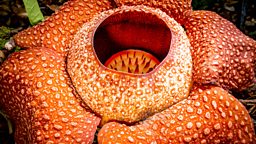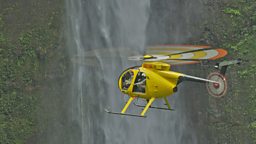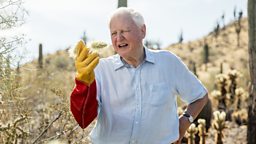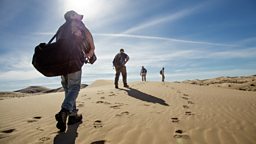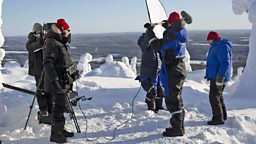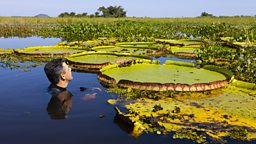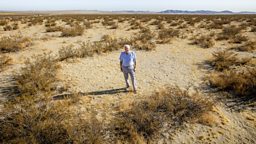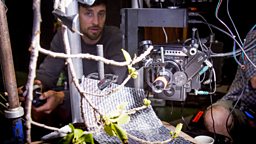Beware the plants: Filming in cactus country
By Paul Williams, Producer for The Green Planet
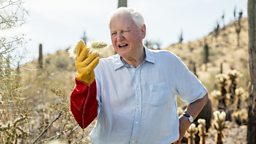
Filming in the Sonoran Desert of Arizona, can be a painful experience
You might think that it would be the snakes, spiders and scorpions that we needed to be wary of whilst filming the desert episode of Green Planet, but in fact it was the plants themselves. Many desert plants are built to protect their water stores, and none are better defended than the cactus. Filming in the Sonoran Desert of Arizona, can be a painful experience, especially when getting low to the ground to film a bugs-eye view. I found myself sitting on prickly pear too many times to recall, and at the end of each day I had to pull spines out of my skin using pliers.
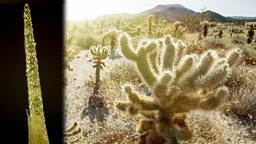
Each spine is like a shard of glass and coated with backward pointing barbs
The most painful incident was when I bumped into what some refer to as the most dangerous of all cactus - the Teddybear cholla. Named for its fluffy appearance, it is in fact armed with a coating of vicious spines. Each spine is like a shard of glass and coated with backward pointing barbs. At the top of each plant sprout dozens of swollen barrel-like buds that break free so easily that they can appear to leap at anyone that gets too close. Once you’ve been ‘attacked’ the spines dig so deep into flesh that it can take a lot of effort to pull them out.
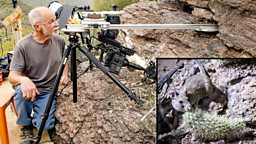
we found someone's pet cat had been caught in a cholla
One evening we heard the most painful howls from a cholla plant not far away. Upon investigating, we found someone's pet cat had been caught in a cholla and was covered in spines - its limbs stuck together, barely able to move. We managed to capture it and quickly took it to a vets for help. It may have been hunting the one animal that uses cholla to its advantage - the pack rat. This pack rat is so nimble that it is able to collect cholla buds to build a defensive wall around its nest, and in doing so it not only protects itself from predators but it helps the cholla to spread and colonise new areas. It is a remarkable relationship that we spent many prickly nights filming but at least the pack rat, so confident in its defences, didn’t seem to mind us getting close as it went about its nocturnal routines.
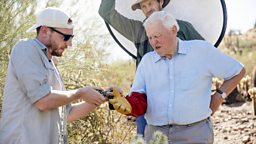
David referred to it as all being part of a genuine desert experience.
Cholla was a huge annoyance to us all but it did inspire us to devise a memorable demonstration for Sir David Attenborough to perform. We had gone to great effort to source kevlar-lined thick protective gloves with the intention that David could thrust his hand into a cholla plant and upon retrieving it, his glove would be covered in prickly buds. However it didn’t quite go to plan as David’s enthusiasm was such that the spines went through the glove and into his hand. Once again the pliers had to be called upon. David referred to it as all being part of a genuine desert experience.
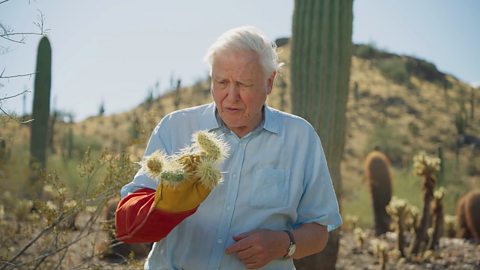
David Attenborough is spiked by the vicious spines of a teddy bear cholla
There's nothing cuddly about the teddy bear cholla.
